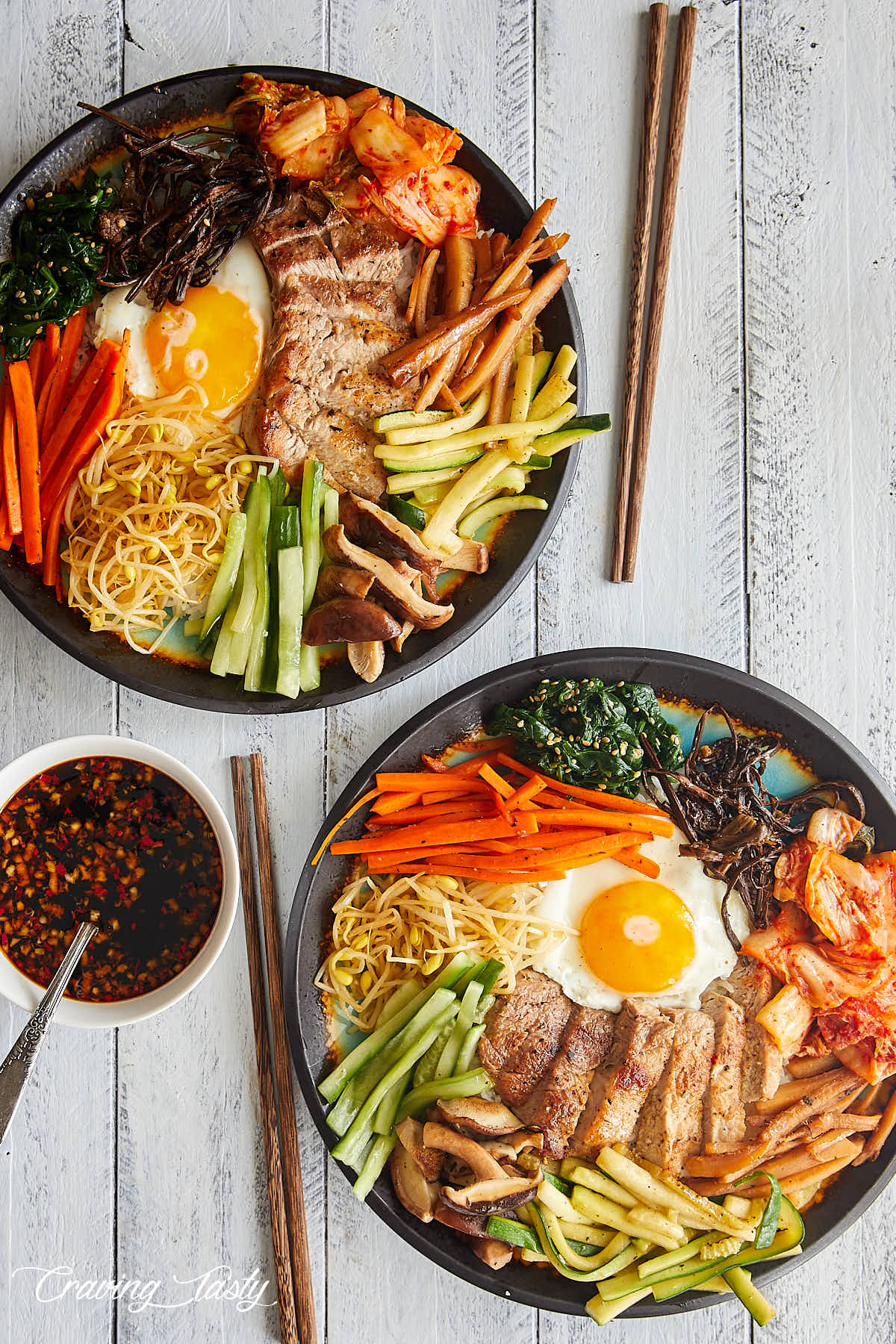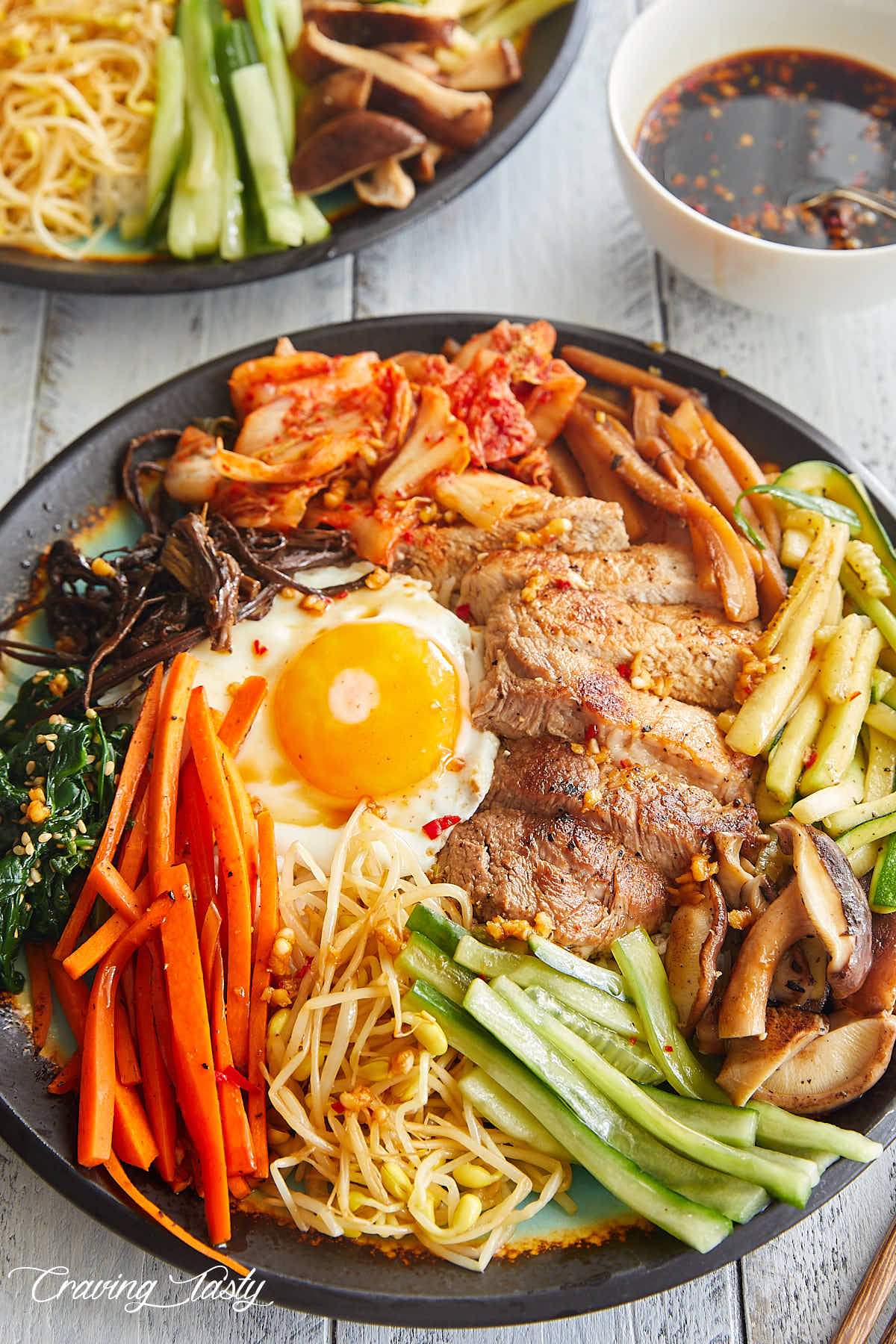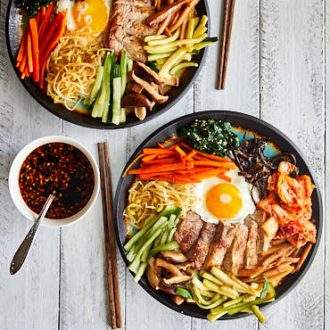While I am not new to Korean cooking, I initially found preparing bibimbap to be quite intimidating and even a little stressful. As I was learning to make this dish, I discovered that there are dozens of tasty components to choose from for bibimbap, and what you put in it really depends on what you have, what you like, or what you feel like eating on a particular day. Any single bibimbap bowl cannot, and should not for that matter, include all of the possible ingredients, so different recipes showcase different components. In this recipe, however, I’ve listed all possible components that I had encountered and tried, and liked, from traditional to not so traditional but still very tasty and appropriate. All with detailed instructions on how to make them. The goal here is to create a comprehensive guide to making bibimbap that will suite any taste. But don’t fret, while the list is long you can choose to pick only 4-5 components for a quick, 30 minutes tops, and delicious bowl of bibimbap. Or add more components for a fulsome meal that doesn’t require any appetizers or sides. It wall take up to an hour or longer but many components can be prepared in advance or even purchased pre-made (e.g. kimchi, pickled radishes, seaweed, marinated bulgogi beef, etc.).
What is bibimbap?
Bibimbap literally means ‘mixed rice’ in Korean, where bibim translates as ‘mixed,’ and bap means ‘cooked rice.’ Essentially, it’s rice mixed with any number of tasty components such as sunny-side-up eggs, sesame oil, hot pepper paste, soybean sprouts, zucchini, cucumbers and other colorful vegetables. Meat is also often included on the plate. Bibimbap that is heated in earthenware pots for serving is called dolsot bibimbap.
Is making bibimbap difficult?
It really depends. When you are just starting out with Korean cooking bibimbap may seem quite intimidating due to the sheer number of ingredients that (may) go in it. The good news is that you can fully control how many components go there. You can make a really quick bibimbap that will literally take 20 minutes from start to finish. It may not necessarily be fully satisfying and you may need to serve it with a soup but it will be very quick. You can also make it very elaborate with a large number of components, and serve it as a one-bowl meal, which will be fully balanced and satisfying. Making such bibimbap may take well over an hour but is totally worth it. Also remember that many components may be prepared well in advance.
What are the components of bibimbap?
Bibimbap dish traditionally consists of:
a bed of rice, mixed with vegetables, roots, mushrooms, pieces of beef, sunny side up egg, and a spicy Korean chili paste (gochujang) or a less spicy serving sauce made with gochujang.
Most of the vegetables found in bibimbap are quite common in North American cuisine:
Carrots Bean sprouts Cucumber Zucchini Bell pepper Baby spinach Shiitake (or other) mushrooms Asian eggplant
A few ingredients such as gosari (dried fernbrake) and doraji (bellflower root) are less well known here, but can be found in many Asian supermarkets or online. Note that doraji and gosari require soaking in water for up to 24 hours. If you have a pressure cooker, the soaking can be substituted for a 30-minute pressure cook. I really like the slight bitterness of the doraji and the crunchy texture it brings. The earthy flavor of gosari is quite interesting and is a great addition to bibimbap. Both are totally worth the extra effort required to prepare them. Gaji namul (seasoned eggplant) is a must try too, at least once, if you have the time to make it, it’s delicious.
The meat for bibimbap bowl
Flank steak or filet mignon, seasoned with soy sauce, sesame oil and seeds, garlic and sugar is the traditional addition to bibimbap if meat is desired. Bulgogi is an excellent option as well. Personally, I find that just about any meat works very well in bibimbap – roasted or baked chicken breasts, roasted chicken, re-heated leftover meat and even quick pan-seared pork chops as shown on the picture below.
Other quick meat options for your bibimbap:
Broiled chicken breasts (delicious and very quick to make) 10-minute pan-fried chicken breasts
Bibimbap serving sauce
If you like spicy food, you may use straight Korean chili paste (gochujang) on your bibimbap. How much? It really depends on your personal taste. Start with a tablespoon, mix it in with the rice and other components in the bowl and taste. Add more if needed. I like spicy food but like to put a tablespoon of gochujang on the side of the bowl and use it, little by little, as I eat. If you are not a big fan of spicy foods, you can season your bibimbap with the serving sauce made with a little bit of hot pepper paste following the recipe below. Alternatively, you may use my favorite basic South Asian dipping sauce that I find goes exceptionally well with bibimbap. It’s bright, tangy, slightly sweet, a little spicy and delicious. My kids love it and always choose it for bibimbap over the traditional sauce. Sources: Seoul Food Korean Cookbook Maangchi’s Real Korean Cooking


